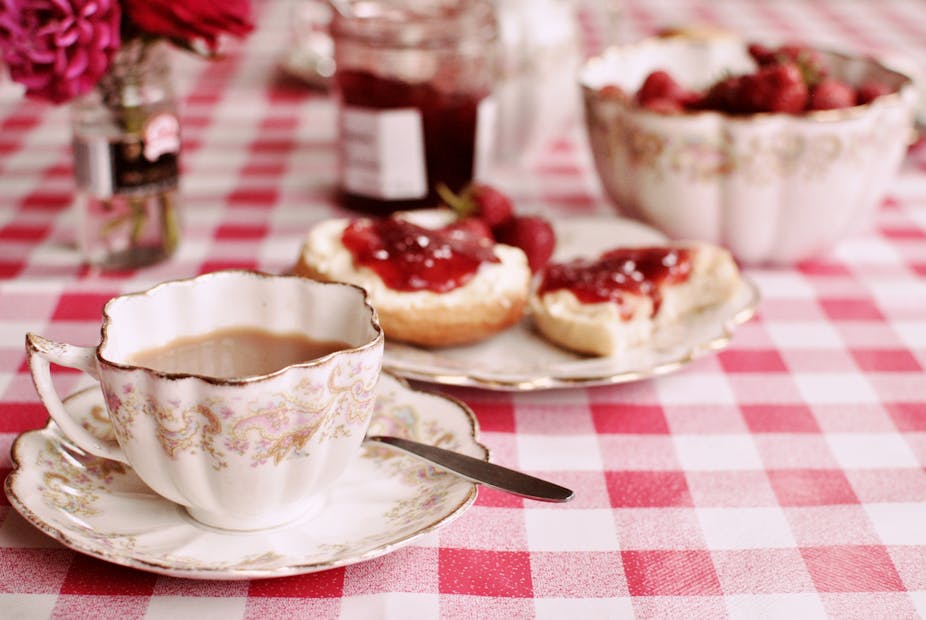Next month the Country Women’s Association (CWA) of New South Wales will vote whether or not to put one of their most valuable assets, their Potts Point headquarters, up for sale. The prospect of the sale has caused concern among some members that the CWA is signalling it is a dying institution. It seems a good time, then, to reflect on the history of the CWA and how it fits in with the modern world of feminism.
Conservative women’s groups in feminist narratives
As a politically conservative women’s association, the CWA retains an uncomfortable place in modern narratives of feminist progress.
The group’s promotion of a model of womanhood based on a conservative notion of domestic femininity combined with a strong dose of civic-mindedness has had less feminist appeal than that promoted by her more radical sisters.
Compounding this lack of feminist attraction has been the group’s historical motto of “Honour to God, Loyalty to the Throne, Service to the Country, Through Country Women” – an awkward reminder of white (conservative and radical) women’s complicity in the colonising process in this country.

Therefore, until fairly recently, feminist historians have tended to either ignore or sideline conservative women’s organisations while highlighting those espousing aims that were less complicatedly feminist, such as those advocating in favour of women’s suffrage or gay rights. The increasing incorporation of histories like that of the CWA into feminist narratives challenges any perception that there has only ever been one face of women’s activism.
A brief history of the CWA
The CWA has an auspicious history.
It began with the founding of the CWA of NSW in 1922. After that, other states formed their own CWAs. In 1945, a national body, the Country Women’s Association of Australia, was established. It reached the peak of its popularity in the decades immediately after the second world war.
It forged both national and international connections by being affiliated with one of the largest international organisations for rural women, the Associated Country Women of the World, which today boasts around 9 million members across perhaps 70 countries and has consultative status on some UN committees (including the Economic and Social Council).
The fact that the CWA was (and is still purported to be) the largest women’s organisation in Australia is indicative of its past and present relevance.

The CWA has always had the welfare of Australian country women and the bridging of country and town/city at the heart of its agenda. It has prioritised attempts to reduce the rural woman’s isolation by providing places for meeting for social and educational purposes.
It has also prioritised the provision of accommodation facilities (like that at Potts Point) for women and their families who have to visit the metropolitan centre for social, business and medical reasons.
Not all of the association’s intentions and activities have been considered so benign, however.
Its attempts to draw Aboriginal and migrant women into the CWA fold, in line with post-war Assimilationist policies, have been viewed with scepticism given the association’s continued image as a white woman’s group.
The iconic CWA tea rooms may have been places where social and class distinctions disappeared – but the same cannot be argued of racial divisions, as Jennifer Jones’ research into the CWA’s racial practices shows. The image of a privileged white elite body is one that overshadows some of the CWA women’s activism at the time, including advocating equal pay for men and women and being outspoken on environmental issues.
Today, while still politically conservative, the CWA has proved itself responsive to changing social, cultural and environmental conditions. For instance, while still advocating environmental reform (water protection rates highly), and making significant donations to disaster-relief programs here and abroad, the organisation’s activities also range from lobbying for the banning of energy drinks to championing efforts to increase the male intake into the nursing profession.
Reclaiming the domestic: feminism today
And yet, in all of this, it seems that I have omitted to mention the proverbial “tea and scones”. Isn’t this the image of the CWA that is best-known and most derided? Where do those elements fit in?
Well, the tea and the scones are just another feature on this uneven terrain that is early-21st-century feminism.
Today, debates abound about whether or not feminism is dead. Has the f-word any relevance for younger generations of women entering into universities and workforces? Aren’t we equal anyway? (I know that I have a tough time trying to introduce my students to the notion that this may not actually be so!)
On the flip side, many women who have benefited from feminist advancements and who are juggling demanding jobs and family duties and social lives are now professing to find themselves attracted to some aspects of conservative femininity. Taking time out for tea, jam and scones – even showing them at fairs – is seen to be a worthy retreat from the fast-paced world of the modern woman.
Perhaps now more than ever, tea and scones – reclaiming aspects of the domestic ideal – are being seen as an acceptable part of the feminist woman’s repertoire.
If you are an academic or researcher working on women’s history and would like to write for The Conversation please contact the Arts + Culture editor.

